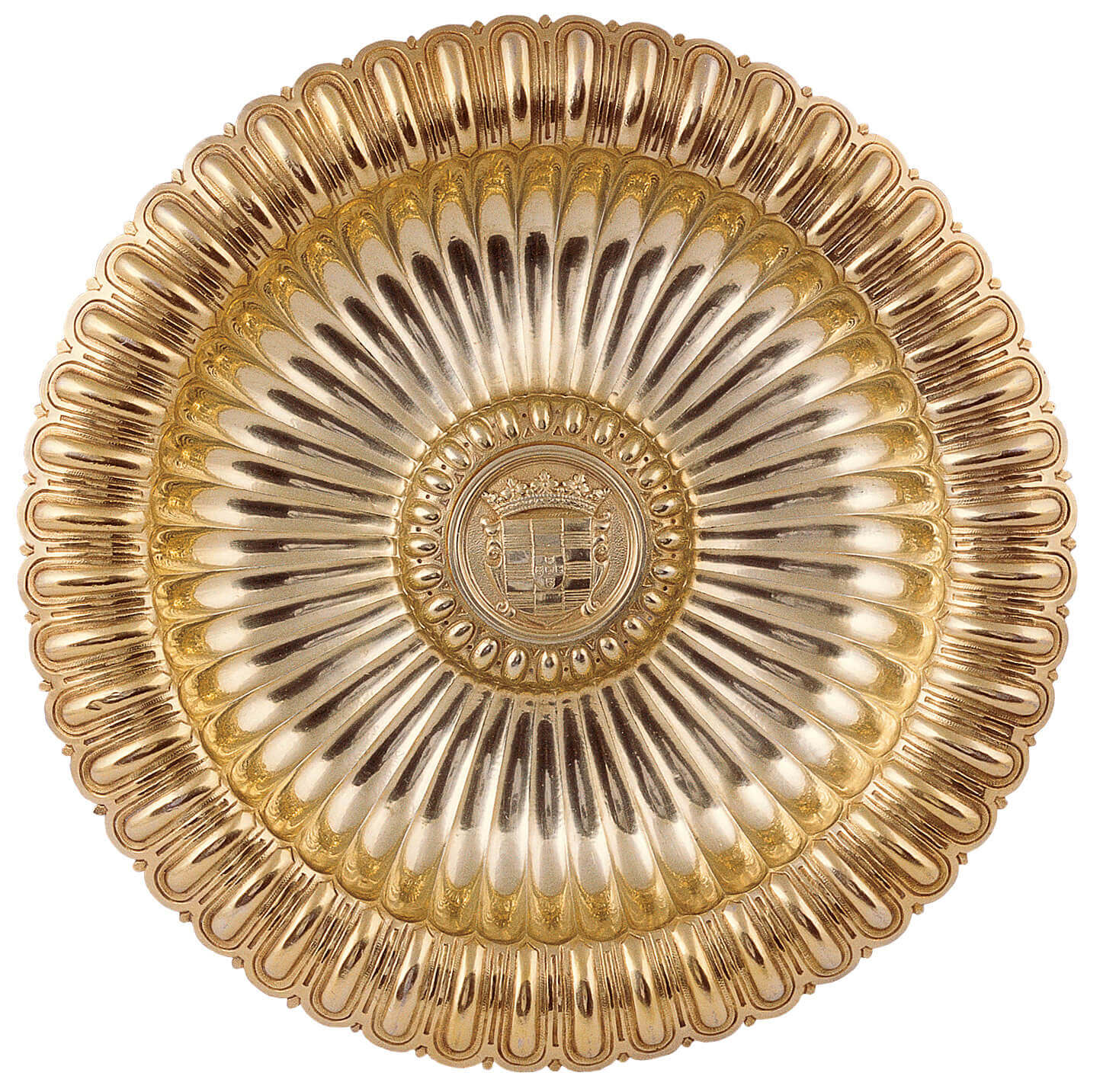Armorial salver

PLACE/DATE
Portugal, 16th century (2nd half)
MATERIALS
Repoussé, chased and gilt silver
DIMENSIONS
Ø 33 cm; 1300 g
INV
OR.613
This armorial salver has stylistic characteristics that bear witness to the change in goldsmithery in the second half of the 16th century, when the exuberant Manueline grammar and the lively mythological themes of the Renaissance gave way to a greater sobriety, expressed by broad, smooth, classic surfaces.
This work is composed of three concentric circles, between which are outlined cabochons in repoussé, radial buds and cartouches. The splendour of this type of decoration results from the irradiation of light on the smooth surfaces, an aesthetic solution which was used until the first half of the 18th century.
Although it has neither a goldsmith’s mark nor a municipal contrast, the most recent studies identify the heraldic motif as corresponding to the coat of arms of Francisco da Gama (1565-1632), 16th Viceroy of India and 4th Count of Vidigueira, who owned an important collection of works of art.
